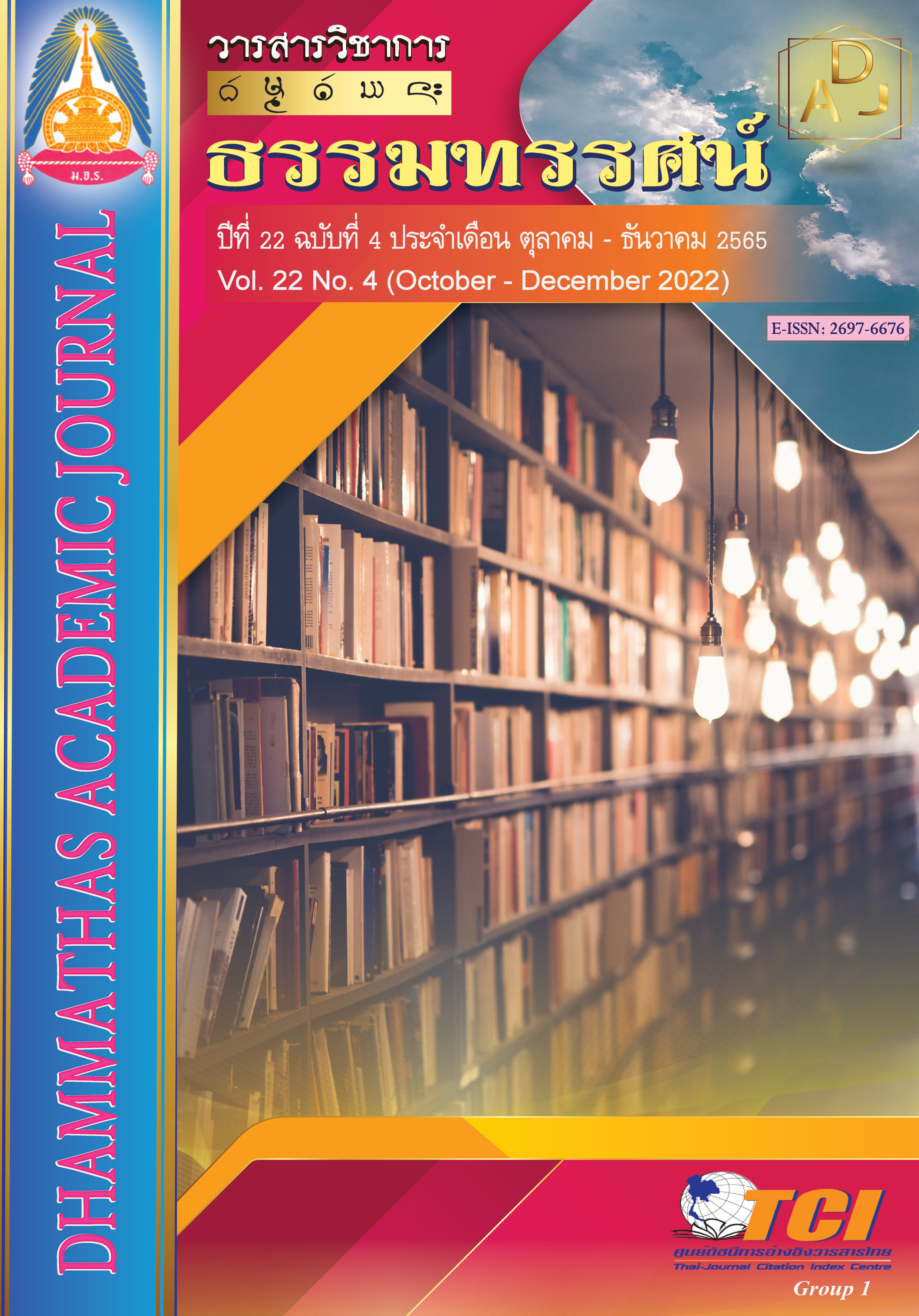Sports Facility Management Model for Rajabhat Universities
Main Article Content
Abstract
This research’s objectives were to 1) study the condition and management guidelines of sports facilities. 2) construct and examine a sports facilities management model of Rajabhat University and 3) assess the feasibility of implementing a sports facilities management model of Rajabhat University. This research is research and development. The procedures for conducting this research were three-fold, 1. study the condition and management of sports facilities of Rajabhat University. The sample group consisted of 400 people by stratified random sampling by comparing the proportions of the samples from the population of each region and study guidelines on the management of sports facilities from 3 experts and study good practice in sports facilities management within 2 institutions. 2. Create and validate the model by taking the information from Step 1 to draft a sports facility management model and verify the suitability of the model with a group discussion. 3. Assess the feasibility of the implementation using the sample group consisting of executives and sports practitioners in 38 Rajabhat universities, 2 people each. The statistics used to analyze the data are Mean and Standard Deviation.
The findings were as follows:
1. Conditions and guidelines for the management of sports facilities of Rajabhat University at a good level.
2. The management model built consists of 3 components as follows: 1) The inputs consist of personnel, budget, materials, equipment, and facilities. management and marketing ingredients 2) management processes consisting of planning, organization, leadership, and control 3) productivity, students, personnel, and people participating in exercise and sports for health.
3. Assessment of the feasibility of applying the developed sports facilities management model has a high level of feasibility for adoption.
Article Details

This work is licensed under a Creative Commons Attribution-NonCommercial-NoDerivatives 4.0 International License.
เพื่อให้เป็นไปตามกฎหมายลิขสิทธิ์ ผู้นิพนธ์ทุกท่านต้องลงลายมือชื่อในแบบฟอร์มใบมอบลิขสิทธิ์บทความ ให้แก่วารสารฯ พร้อมกับบทความต้นฉบับที่ได้แก้ไขครั้งสุดท้าย นอกจากนี้ ผู้นิพนธ์ทุกท่านต้องยืนยันว่าบทความ ต้นฉบับที่ส่งมาตีพิมพ์นั้น ได้ส่งมาตีพิมพ์เฉพาะในวารสาร วิชาการธรรม ทรรศน์ เพียงแห่งเดียวเท่านั้น หากมีการใช้ ภาพหรือตารางของผู้นิพนธ์อื่นที่ปรากฏในสิ่งตีพิมพ์อื่นมาแล้ว ผู้นิพนธ์ต้องขออนุญาตเจ้าของลิขสิทธิ์ก่อน พร้อมทั้ง แสดงหนังสือที่ได้รับการยินยอมต่อบรรณาธิการ ก่อนที่บทความจะได้รับการตีพิมพ์References
กระทรวงการท่องเที่ยวและกีฬา. (2560). แผนพัฒนาการกีฬาแห่งชาติ ฉบับที่ 6. กรุงเทพฯ: กระทรวงท่องเที่ยวและกีฬา.
ทวีศักดิ์ สว่างเมฆ. (2557). กลยุทธ์การจัดการกีฬาเพื่อสร้างเสริมสุขภาพของนิสิตนักศึกษาในสถาบันอุดมศึกษาของรัฐ. พิษณุโลก: มหาวิทยาลัยนเรศวร.
พงษ์เอก สุขใส และคณะ. (2557). รูปแบบการบริหารจัดการกีฬาขององค์การบริหารส่วนจังหวัด. วารสารศึกษาศาสตร์ มหาวิทยาลัยนเรศวร, 16(4), 104-115.
พรพิมล รุ่งเรืองศิลป์. (2560). สภาพปัญหาการจัดการกีฬาเพื่อสุขภาพในมหาวิทยาลัยราชภัฏ. (วิทยานิพนธ์การศึกษามหาบัณฑิต). พิษณุโลก: มหาวิทยาลัยนเรศวร.
พิเชฐ สยมภูวนาถ. (2564). สภาพและแนวทางการสนับสนุนสิ่งอำนวยความสะดวกด้านการกีฬาในมหาวิทยาลัยราชภัฏภาคเหนือ. Journal of Modern Learning Development, 6(4), 285-296.
ภาคภูมิ โชคทวีพาณิชย์ และคณะ. (2561). สภาพปัญหาการจัดการกิจกรรมทางกายของนักศึกษาในมหาวิทยาลัยราชภัฏภาคเหนือ. วารสารเครือข่ายวิทยาลัยพยาบาลและการสาธารณสุขภาคใต้, 5(3), 262-273.
ภานุพันธ์ ลาภรัตนทอง. (2563). รูปแบบการจัดการกิจกรรมทางกายสำหรับนักศึกษาในมหาวิทยาลัยเทคโนโลยีราชมงคล. (วิทยานิพนธ์ปรัชญาดุษฎีบัณฑิต). พิษณุโลก: มหาวิทยาลัยนเรศวร.
วาโร เพ็งสวัสดิ์. (2553). การวิจัยพัฒนารูปแบบ. วารสารมหาวิทยาลัยราชภัฏสกลนคร, 2(4), 1-15.
วิรุตม์ ประไพพักตร์. (2556). ปัจจัยพฤติกรรมผู้บริโภคและปัจจัยส่วนประสมทางการตลาดบริการที่ส่งผลต่อกระบวนการตัดสินใจซื้อสินค้าประเภทเครื่องครัวในเขตอำเภอเมือง จังหวัดระยอง. (วิทยานิพนธ์บริหารธุรกิจมหาบัณฑิต). กรุงเทพฯ: มหาวิทยาลัยกรุงเทพ.
สมคิด บางโม. (2558). องค์การและการจัดการ. กรุงเทพฯ: วิทยพัฒน์.
สำนักงานคณะกรรมการพัฒนาการเศรษฐกิจและสังคมแห่งชาติ. (2560). แผนพัฒนาเศรษฐกิจและสังคมแห่งชาติฉบับที่ 12. กรุงเทพฯ: สำนักงานคณะกรรมการพัฒนาการเศรษฐกิจและสังคม.
อรุณี จิระพลังทรัพย์. (2558). การพัฒนารูปแบบการจัดการกีฬาเชิงนันนทนาการของกรุงเทพมหานคร. (ดุษฎีนิพนธ์วิทยาศาสตรดุษฎีบัณฑิต). กรุงเทพฯ: จุฬาลงกรณ์มหาวิทยาลัย.
อัษ แสนภักดี. (2558). รูปแบบของปัจจัยด้านการบริหารที่ส่งผลต่อประสิทธิผลของกีฬาเพื่อความเป็นเลิศในสถาบันอุดมศึกษาของรัฐ. (ดุษฎีนิพนธ์ปรัชญาดุษฎีบัณฑิต). ชลบุรี: มหาวิทยาลัยบูรพา.
Allen, F., Qian, J. & Qian, M. (2005). Law, finance, and economic growth in China. Journal of financial economics, 77(1), 57-116.
Eric, C. S., Stacey, A. H. & Simon, S. (2010). Sport Facility Operations Management. London: Elsevier Ltd.
Geraplangsub, A. & Gultawatvichai, T. (2019). Management guideline for public sports and recreation in an urban setting: case of bangkok, Thailand. PSAKU International Journal of Interdisciplinary Research, 8(1), 192-203.
Yamane, T. (1967). Statistics: an introductory analysis. (2nd ed). New York: Harper and Row.

